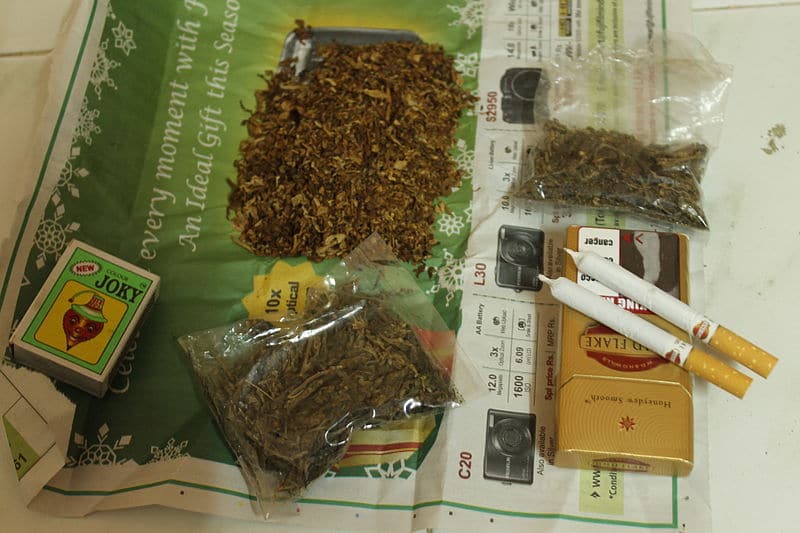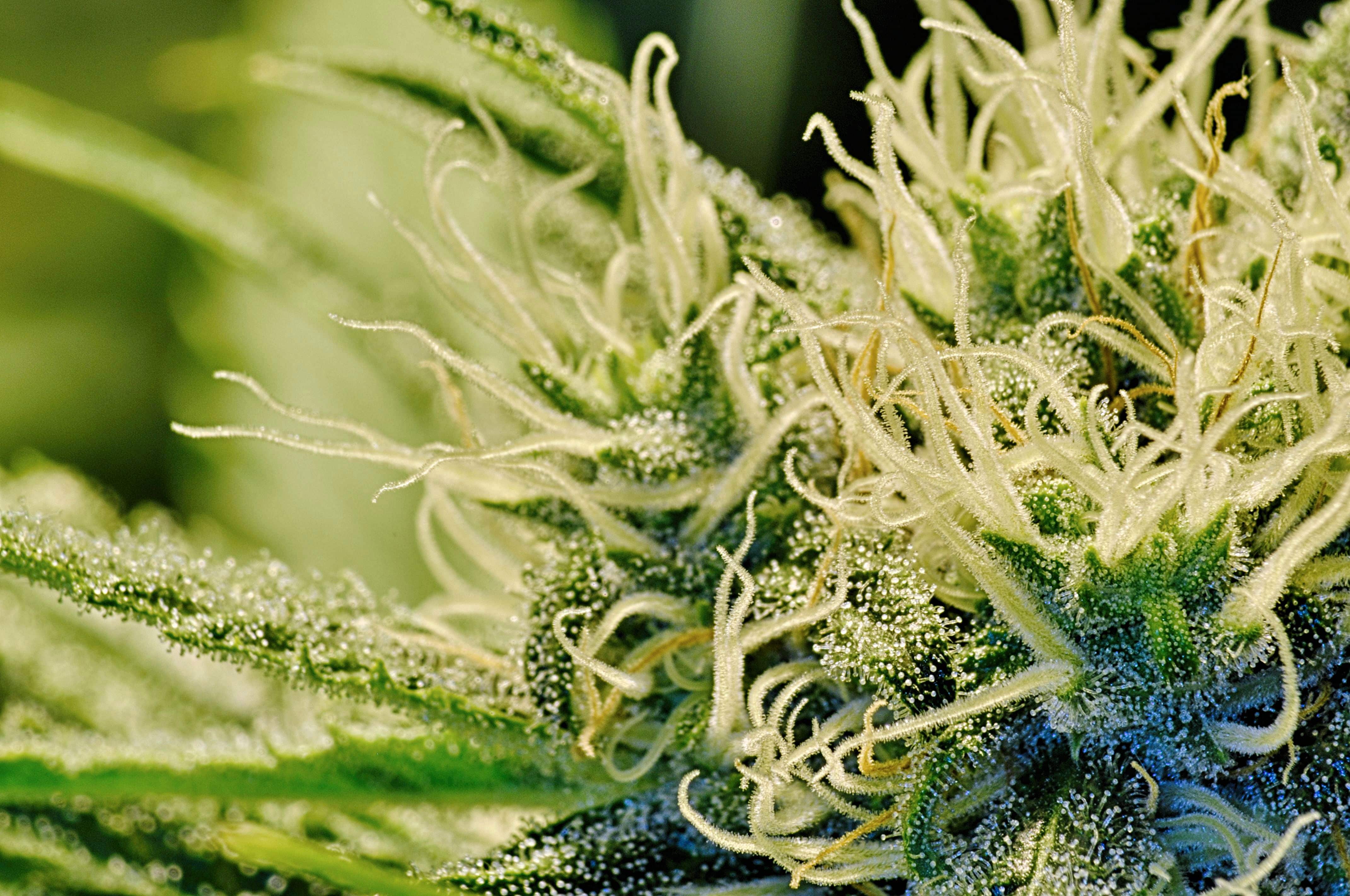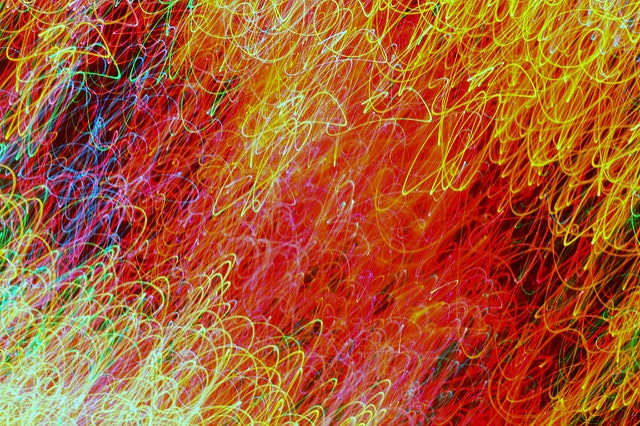
Getting the proper dose of medical marijuana can be a long process for new patients. Image Source: Wikimedia user സ്വാമി.
You can’t overdose on cannabis. That’s what everyone told me when I was hesitant to try cannabis for insomnia related to my anxiety. Other solutions weren’t relieving my anxiety, and when I took commercially available sleep aids, I often had restless, interrupted sleep. When I finally decided to try cannabis, my friends tried to comfort me by touting the familiar line about the substance’s safety—that it is simply impossible to overdose on it. Unfortunately, during my first month with marijuana, I discovered that my friends were wrong.
The miscommunication comes from the word “overdose.” Many people assume that an overdose refers to death from consuming too much of a drug, but an overdose can actually include a range of unwanted or unexpected effects brought on by consuming more than a recommended dose of a drug or medicine. Because of the location of the cannabinoid receptors in your brain, you cannot die from taking too much cannabis, but you may still experience unwanted side effects if you take too large a dose. Most commonly, these effects include anxiety or panic attacks, slowed coordination, pupil dilation, dry mouth, shortness of breath, increased heart rate, and disorientation. For someone who was taking marijuana to offset my anxiety, these side-effects were unpleasant, but I thought they were just a standard part of the medicine. It was only after I adjusted my dose that I noticed an improvement in my anxiety and sleep patterns without the unwanted symptoms. Now, I hope to help other patients recognize signs of cannabis overdose and prevent negative side effects when taking their medicine.
Work With an Experienced Dispensary
As a medical marijuana patient, you should always get your marijuana from a licensed dispensary. Many people turn to street marijuana because it is more convenient or cheaper, but not only may street marijuana be laced with pesticides, synthetic cannabis, or other drugs, it is also not regulated in regards to strength and strain. Official dispensaries regularly test their supply to determine the quality and the strength of their various products, which gives you greater control over the amount of active ingredients you are ingesting.
Also, the staff at most dispensaries are knowledgeable about the effects of marijuana, so just as a pharmacist can be critical in understanding your other medications, your dispensary staff will be helpful in figuring out the best way to take medical marijuana. This is important because the doctors prescribing medical marijuana often approve you for a certain amount of medical marijuana per month without discussing delivery methods or frequency of dose.
If you are new to marijuana, let the dispensary staff know so they can help guide your choices. If you are having a bad reaction to your medication, do not hesitate to ask the dispensary staff to help you troubleshoot your problems, or consider working with a psychedelic therapist to get more targeted help.
Start With Small Doses
When you first start using medical marijuana, it can be a little difficult to understand how dosage works. The two components of medical marijuana that are usually measured are the THC and CBD content. THC is responsible for most of the psychological effects of the medicine and CDB is responsible for most of the physical effects. A standard dose is considered 10 milligrams of THC. With smoked or vaporized marijuana, you have to weigh out the correct amount or purchase pre-separated doses, often in the form of rolled cigarettes. With edibles, each unit—such as a square of chocolate or a single gummy candy—is usually 10 milligrams of THC.
The correct dose for you will depend on the intended effect, your metabolism, your brain chemistry, your size, and your experience level. For instance, an experienced marijuana user with a heavy build and high metabolism may take 20-30 milligrams of THC, but most new users should start at 10 milligrams or less. If you have never used marijuana before, I suggest starting with 5 milligrams, waiting for the medicine to take effect, and then adding more if you need it. You should keep in mind that with edibles, the effects may not fully develop for 1-2 hours after you eat it. Starting with a small dose will help ease you into the medicine and allow you to know what to expect as you slowly increase your dose to the appropriate amount for you. If you are unsure about your dose, you should contact your doctor or a psychedelic therapist.
Consider Alternative Methods of Consumption
Medical marijuana comes in many different forms. Each of the main methods of consumption— smoking, vaporizing, eating, or swallowing a gel cap— have specific pros and cons. Smoking and vaporizing allow the medicine to quickly enter your bloodstream, and you will feel the effects almost immediately. Alternatively, edibles take longer to kick in but are more effective at lower doses, last longer, and are easier to measure. If you find you are struggling to get the correct dose with a particular delivery method, you should switch to a different method to see if you are able to better control the amount of THC you are consuming.
Consider Different Strains
Medical marijuana is available in hundreds of different strains. Lately, it has been popular for growers to attempt to maximize the amount of CBD in a strain while minimizing the amount of THC. For most people, this will allow maximum positive effects without unwanted side effects. However, the amount of THC and CBD needed depends on what you are trying to treat and how your body reacts to the medicine. To find a strain that treats your symptoms without requiring a dose high enough to cause unpleasant side effects may require trying different products. Once again, your dispensary workers will be a valuable resource when it comes to selecting a strain that has been shown to work in situations similar to yours.
A cannabis overdose can be unsettling, especially if you have no previous experience with marijuana. If you are having negative side effects, you should not assume that they are normal or something you have to suffer through in order to get the benefits of medical marijuana. Instead, carefully review your dose amount, how often you take it, and your method of consumption. You should also discuss your problems with your dispensary workers and your doctor or seek extended one-on-one help through a psychedelic therapist or counselor. This will allow the professionals to help you find the correct dose for you and to help guide future patients to safe choices regarding their medicinal usage of marijuana.









